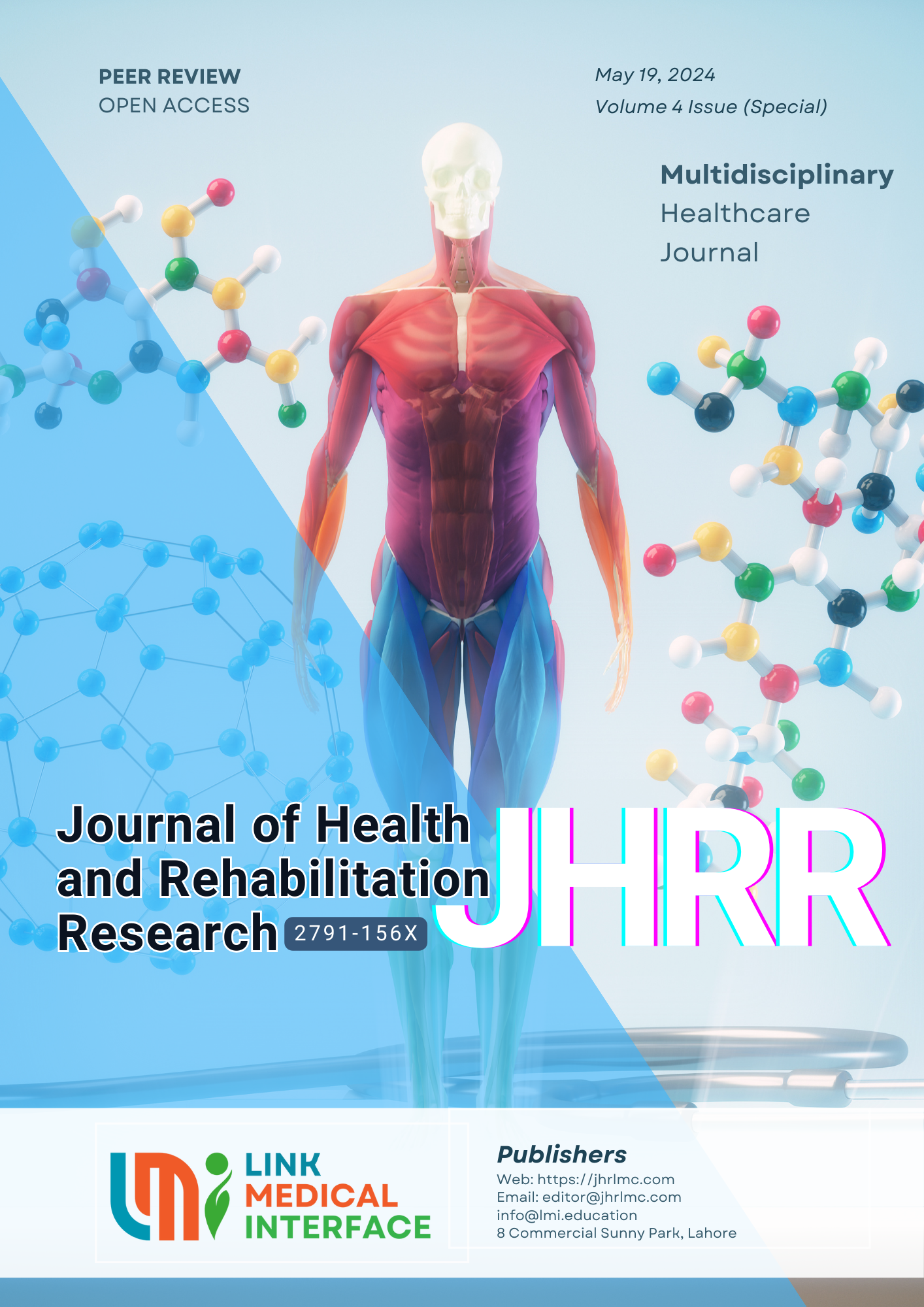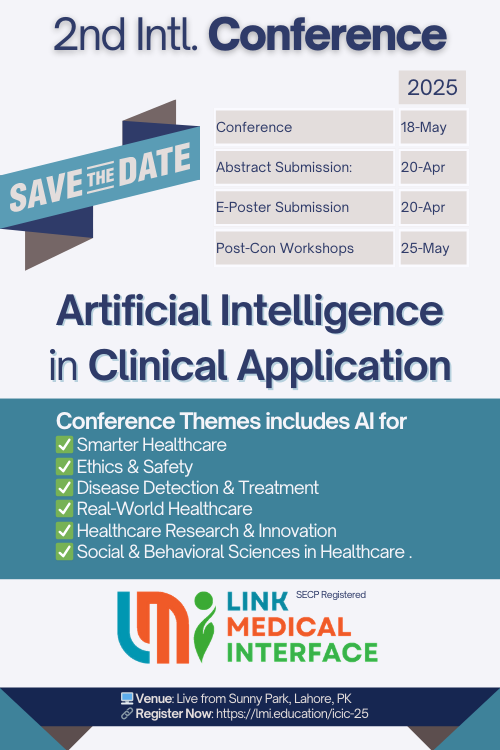Effectiveness of Dry Needling and Stretching in Fibromyalgia: A Randomized Clinical Trial
DOI:
https://doi.org/10.61919/jhrr.v4iICIC1.1100Keywords:
Fibromyalgia, Dry Needling, Stretching, Pain ManagementAbstract
Background: Fibromyalgia syndrome (FM) is characterized by widespread chronic musculoskeletal pain, fatigue, sleep disturbances, and a range of psychosomatic symptoms. Non-pharmacological treatments, such as physical therapy, have shown promise in managing these symptoms. This study aimed to evaluate the effectiveness of dry needling and stretching in reducing pain pressure thresholds, fatigue, and disability in fibromyalgia patients.
Objective: To compare the effectiveness of dry needling and stretching in the treatment of fibromyalgia, specifically focusing on improvements in pain pressure thresholds, fatigue, and disability.
Methods: A randomized clinical trial was conducted with 10 female participants aged 35-55 years, diagnosed with fibromyalgia and scoring over 60 on the Fibromyalgia Impact Questionnaire (FIQ). Participants were randomly assigned to two groups: Group A (Stretching) and Group B (Dry-Needling). Each group received two treatment sessions over six months. The Stretching protocol involved static stretching of major muscle groups, while the Dry-Needling protocol involved the insertion of thin filiform needles into tender points. Both groups also received routine physical therapy, including hot packs and ultrasound therapy. Data were collected using the FIQ before and after the interventions. Statistical analyses were performed using SPSS version 25, with significance set at p < 0.05.
Results: Both groups showed significant improvements in FIQ scores after treatment. Group A (Stretching) had a mean pre-treatment FIQ score of 119.2 ± 11.0 and a post-treatment score of 105.8 ± 9.1 (p < 0.001). Group B (Dry-Needling) had a mean pre-treatment FIQ score of 120.8 ± 9.2 and a post-treatment score of 67.8 ± 4.0 (p < 0.001). The Dry-Needling group showed greater improvements across all measured parameters, including reductions in pain (t = 11.0, p < 0.001), fatigue (t = 14.0, p < 0.001), and sleep disturbances (t = 4.5, p = 0.010).
Conclusion: Both dry needling and stretching significantly reduced pain, fatigue, and disability in fibromyalgia patients, with dry needling demonstrating greater efficacy. These findings support the inclusion of dry needling as an effective non-pharmacological treatment for fibromyalgia.
Keywords: Fibromyalgia, Dry Needling, Stretching, Pain Management, Fatigue Reduction, Disability Improvement, Non-Pharmacological Treatment.
Downloads
References
Araújo FM, DeSantana JM. Physical Therapy Modalities for Treating Fibromyalgia. F1000Res. 2019;8:314.
Siracusa R, Paola RD, Cuzzocrea S, Impellizzeri D. Fibromyalgia: Pathogenesis, Mechanisms, Diagnosis and Treatment Options Update. Int J Mol Sci. 2021;22(8):3565-3578.
Sarzi-Puttini P, Giorgi V, Marotto D, Atzeni F. Fibromyalgia: An Update on Clinical Characteristics, Aetiopathogenesis and Treatment. Nat Rev Rheumatol. 2020;16(11):645-660.
Atzeni F, Cirillo M, D'Amico V, Rodríguez-Carrio J, Corda M, Alciati A. Cardiovascular Risk Factors and Events in Fibromyalgia Patients. Isr Med Assoc J. 2023;25(9):627-630.
Benebo FO, Lukic M, Jakobsen MD, Braaten TB. Lifestyle Risk Factors of Self-Reported Fibromyalgia in the Norwegian Women and Cancer (NOWAC) Study. BMC Public Health. 2023;23(1):1967.
Maffei ME. Fibromyalgia: Recent Advances in Diagnosis, Classification, Pharmacotherapy and Alternative Remedies. Int J Mol Sci. 2020;21(21):8145.
Giorgi V, Sirotti S, Romano ME, Marotto D, Ablin JN, Salaffi F, Sarzi-Puttini P. Fibromyalgia: One Year in Review 2022. Clin Exp Rheumatol. 2022;40(6):1065-1072.
Assavarittirong C, Samborski W, Grygiel-Górniak B. Oxidative Stress in Fibromyalgia: From Pathology to Treatment. Oxid Med Cell Longev. 2022;2022:1582432.
Chen R, Yin C, Fang J, Liu B. The NLRP3 Inflammasome: An Emerging Therapeutic Target for Chronic Pain. J Neuroinflammation. 2021;18:1-12.
Saracoglu I, Akin E, Aydin Dincer GB. Efficacy of Adding Pain Neuroscience Education to a Multimodal Treatment in Fibromyalgia: A Systematic Review and Meta-Analysis. Int J Rheum Dis. 2022;25(4):394-404.
D'Onghia M, Ciaffi J, Ruscitti P, Cipriani P, Giacomelli R, Ablin JN, et al. The Economic Burden of Fibromyalgia: A Systematic Literature Review. Semin Arthritis Rheum. 2022;52:1036-1051.
Ursini F, Ciaffi J, Mancarella L, Lisi L, Brusi V, Cavallari C, et al. Fibromyalgia: A New Facet of the Post-COVID-19 Syndrome Spectrum? Results from a Web-Based Survey. RMD Open. 2021;7(3).
Sarzi-Puttini P, Giorgi V, Atzeni F, Gorla R, Kosek E, Choy EH, et al. Fibromyalgia Position Paper. Clin Exp Rheumatol. 2021;39(3):186-193.
Gyorfi M, Rupp A, Abd-Elsayed A. Fibromyalgia Pathophysiology. Biomedicines. 2022;10(12):3070.
Pinto AM, Luís M, Geenen R, Palavra F, Lumley MA, Ablin JN, et al. Neurophysiological and Psychosocial Mechanisms of Fibromyalgia: A Comprehensive Review and Call for an Integrative Model. Neurosci Biobehav Rev. 2023;105235.
Bourke SL, Schlag AK, O'Sullivan SE, Nutt DJ, Finn DP. Cannabinoids and the Endocannabinoid System in Fibromyalgia: A Review of Preclinical and Clinical Research. Pharmacol Ther. 2022;240:108216.
Valera-Calero JA, Fernández-de-Las-Peñas C, Navarro-Santana MJ, Plaza-Manzano G. Efficacy of Dry Needling and Acupuncture in Patients with Fibromyalgia: A Systematic Review and Meta-Analysis. Int J Environ Res Public Health. 2022;19(16):9876-9885.
Compagnoni R, Suffritti C, Fossati C, Zanini B, Gerace F, Menon A, et al. Exploring the Prevalence and Clinical Impact of Fibromyalgia Syndrome in Patients with Shoulder Diseases: A Cross-Sectional Study. Clin Exp Rheumatol. 2023;41(6):1317-1322.
Zamunér AR, Andrade CP, Arca EA, Avila MA. Impact of Water Therapy on Pain Management in Patients with Fibromyalgia: Current Perspectives. J Pain Res. 2019;12:1971-2007.
Flynn DM. Chronic Musculoskeletal Pain: Nonpharmacologic, Noninvasive Treatments. Am Fam Physician. 2020;102(8):465-477.
Araya-Quintanilla F, Gutiérrez-Espinoza H, Fuentes J, Prieto-Lafrentz F, Pavez L, Cristi-Montero C, et al. Effectiveness of Multicomponent Treatment in Patients with Fibromyalgia: Protocol for a Systematic Review and Meta-Analysis. Syst Rev. 2022;11(1):69.
Downloads
Published
How to Cite
Issue
Section
License
Copyright (c) 2024 Sumaira Yasmin, Nida Ilahi, Sania Naz, Hina Mustafa, Adeena Shams, Kinza Fatima, Mahnoor Najeeb, Anoosha Taskeen Javed, Areej Fatima

This work is licensed under a Creative Commons Attribution 4.0 International License.
Public Licensing Terms
This work is licensed under the Creative Commons Attribution 4.0 International License (CC BY 4.0). Under this license:
- You are free to share (copy and redistribute the material in any medium or format) and adapt (remix, transform, and build upon the material) for any purpose, including commercial use.
- Attribution must be given to the original author(s) and source in a manner that is reasonable and does not imply endorsement.
- No additional restrictions may be applied that conflict with the terms of this license.
For more details, visit: https://creativecommons.org/licenses/by/4.0/.






